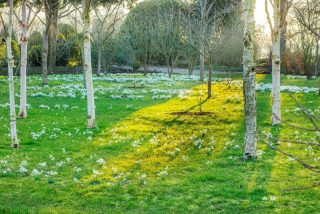Planting Snowdrops
The white bells of snowdrops gently ring in the spring which we have waited for so longingly. When planted en masse, they light up the gloomiest February day. We are very fortunate to have large colonies of native snowdrops in our ancient woodlands. Interestingly, these are of the double form Galanthus nivalis ‘Flore Pleno’, which does occur in the wild.
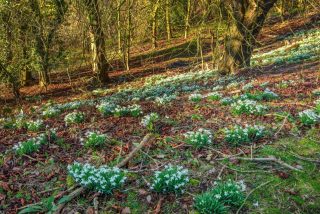
To create carpets of snowdrops in the New Garden, we plant 2,000 bulbs of the single form Galanthus nivalis each spring. While we admire the exquisite collections of galanthophiles, we do not plant special cultivars as we feel they would be ‘lost’ in the grass.
The best way to establish snowdrops is to plant them as freshly lifted bulbs ‘in the green’. They dry out very quickly, and dry bulbs do not root as well. As with everything else, there are different schools of thought: One school prefers to plant clumps for instant impact, the other school to plant individuals for a naturalized look.
We take the middle road in planting groups of 3-5 bulbs.
The planting method which we find works best is using a crowbar, as described in a previous feature about the various ways to plant bulbs in grass (see October section).
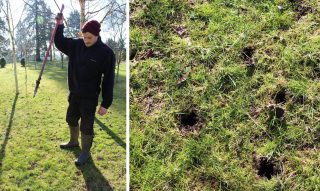
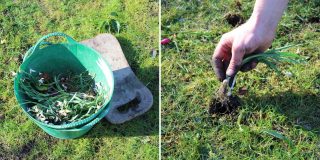
To help the bulbs on their way, we add a handful of compost to each planting hole.
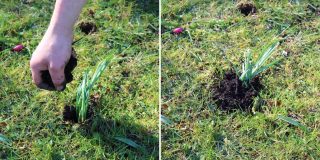
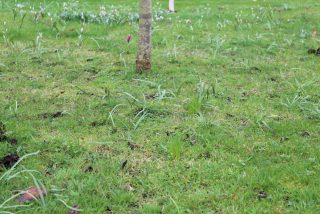
In the following spring, the bulbs form small colonies which grow each year.
